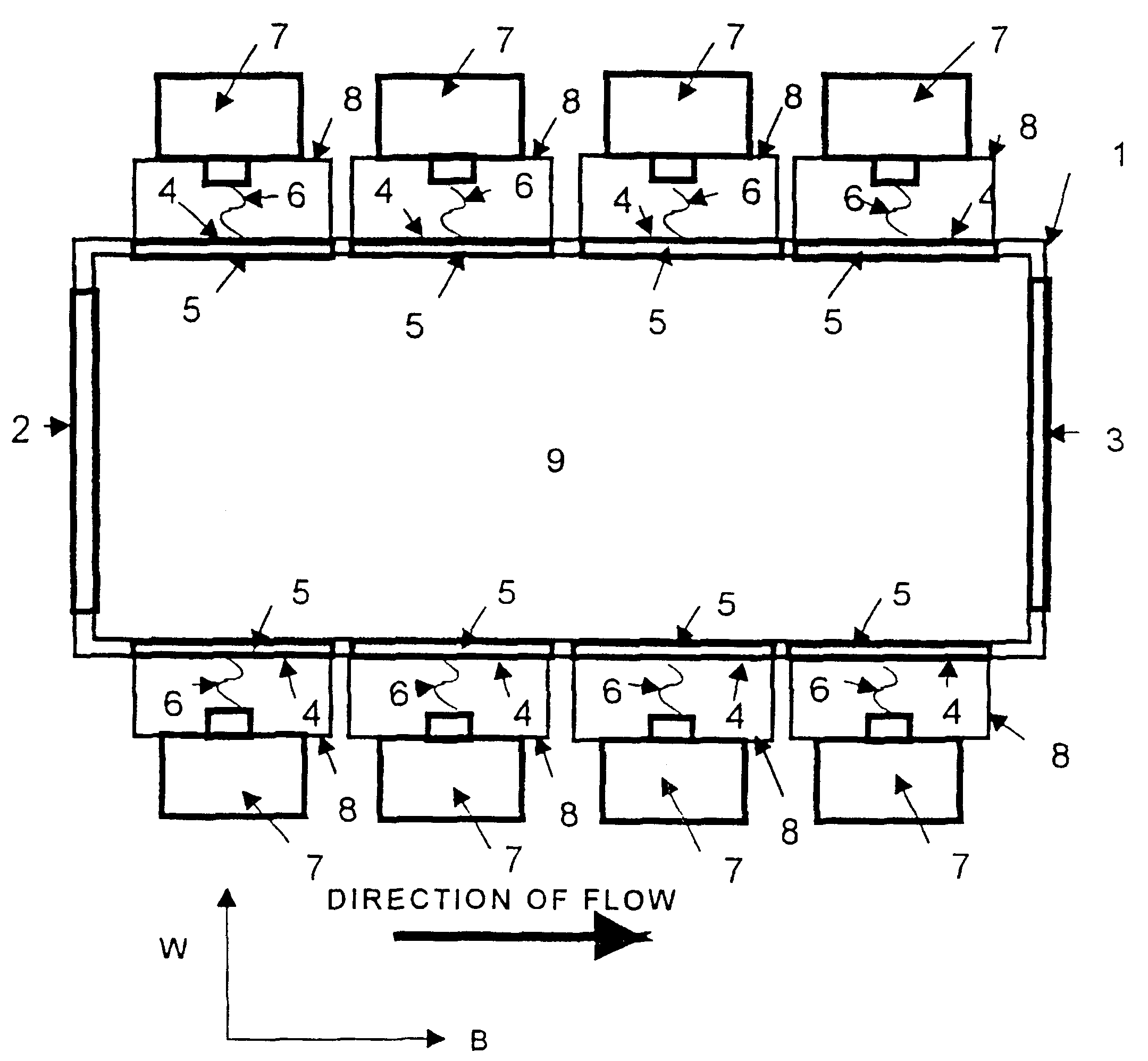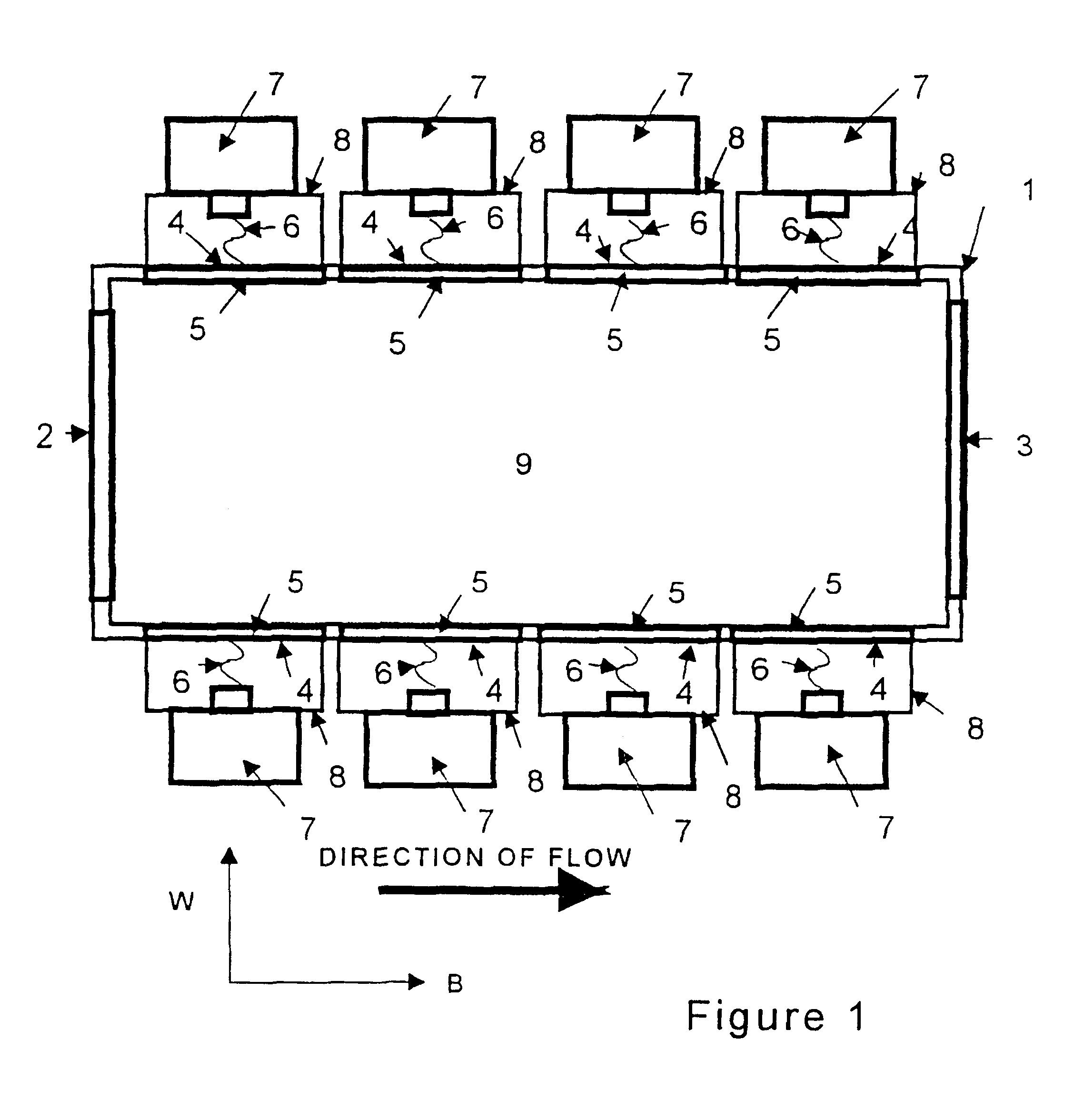Artificial dielectric device for heating gases with electromagnetic energy
a dielectric device and electromagnetic energy technology, applied in the direction of electric/magnetic/electromagnetic heating, energy-based chemical/physical/physical-chemical processes, separation processes, etc., can solve the problems of limited above-effects and the inability of the susceptor's structure to allow the applied energy to penetrate into the entire volume, etc., to achieve faster heating rate, reduce the time to, and improve the effect of heat dissipation
- Summary
- Abstract
- Description
- Claims
- Application Information
AI Technical Summary
Benefits of technology
Problems solved by technology
Method used
Image
Examples
Embodiment Construction
This invention is a device which uses a gas-permeable structure for a susceptor of electromagnetic energy to react gases for desired products or to treat pollutants for producing clean air which can be discharge into the environment in accordance with the law of the land. The device has a specific cavity geometry, location where the of the applied energy from a source enters the cavity, a susceptor that is designed by the depth of penetration of the susceptor, and a means to scale-up the device for larger flow rates of an air stream without changing the susceptor's interaction with the applied energy or depth of penetration of the susceptor because the device is designed to increase the size of the device by a near linear scale from the location of the where the applied electromagnetic energy enters the cavity and the cavity's geometry.
Another aspect of this invention is a heat transfer process that increases the efficiency of the device.
Another aspect of this invention is a gas-per...
PUM
| Property | Measurement | Unit |
|---|---|---|
| thickness | aaaaa | aaaaa |
| thickness | aaaaa | aaaaa |
| diameter | aaaaa | aaaaa |
Abstract
Description
Claims
Application Information
 Login to View More
Login to View More - R&D
- Intellectual Property
- Life Sciences
- Materials
- Tech Scout
- Unparalleled Data Quality
- Higher Quality Content
- 60% Fewer Hallucinations
Browse by: Latest US Patents, China's latest patents, Technical Efficacy Thesaurus, Application Domain, Technology Topic, Popular Technical Reports.
© 2025 PatSnap. All rights reserved.Legal|Privacy policy|Modern Slavery Act Transparency Statement|Sitemap|About US| Contact US: help@patsnap.com



